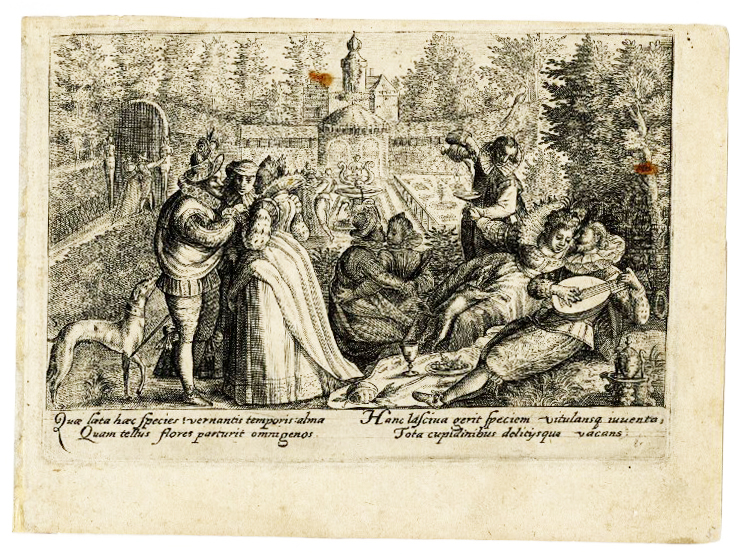Early in the 16th century, Dutch emblem books primers or handbooks for youthful aristocrats. Among the more socially and sexually suggestive of these books are The Garden of Love [Hortus Voluptatum] (1599) and New Mirror for Youth [Nieuwen ieucht spieghel] (1617), both of which probably owe their inspiration to Giovanni Boccaccio’s Decameron (1553.
Young People Amusing Themselves in a Spring Garden provides a picnicky lesson for courting and lovemaking in a garden with music, singing, and dining alfresco.
The accompanying legend suggests men and women are expected to engage in discreet sexuality: How fertile are these sights! In springtime: nourishing
As Earth brings forth flowers of all kinds.
These incite frolic and youthful celebration
Freeing you for all desires and delights.
Featured Image: Crispijn de Passe the Elder. Young People Amusing Themselves in a Spring Garden. New Mirror for Youth [Nieuwen ieucht spieghel] (1617), copperplate engraving. The author of the text is unknown. Emblem Project; http://emblems.let.uu.nl/nj1617023.html
See Crispijn de Passe, the Elder. Young People Amusing Themselves in a Spring Garden. New Mirror for Youth [Nieuwen ieucht spieghel] (1617), copperplate engraving. The author of the text is unknown. Emblem Project; http://emblems.let.uu.nl/nj1617023.html. (Translation from Latin by Ken Albala)

